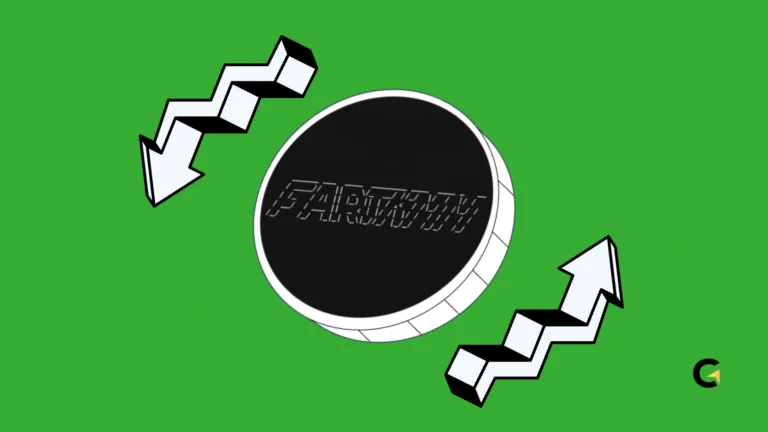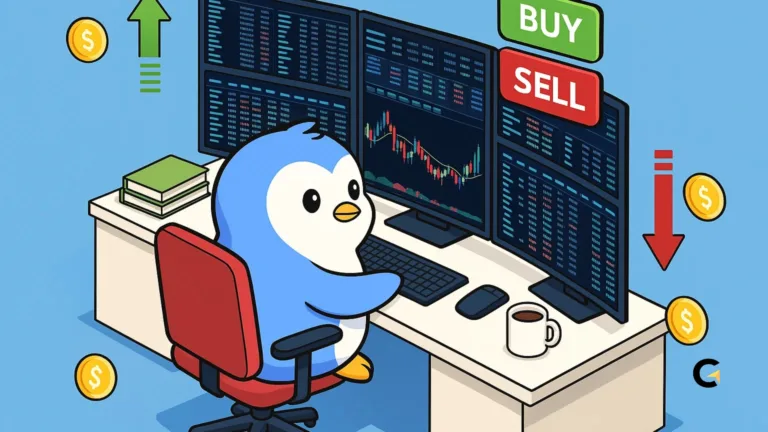6 Smart Moves to Earn When SOL Drops
When the price of Solana (SOL) drops significantly, most investors freak out. But if you actually know what you’re doing, this could be a golden moment—not a red alert.
A big dip doesn’t just scream danger; it whispers “massive opportunity” to stack up on quality assets before the next comeback wave hits.
In this article, we’ll break down six smart strategies for buying SOL during price drops—backed by technical indicators, on-chain data, and real risk management tactics.
No boring theory here. This is the practical, no-BS version—stuff you can actually apply. So instead of getting wrecked by market swings, you’ll learn to stay calm, think clearly, and make moves that count.
Quick Facts You Need to Know
Hide-
Dollar-Cost Averaging (DCA): A safe way to accumulate SOL without stressing over timing
-
Technical Analysis: Use tools like TD Sequential and key support/resistance levels
-
On-Chain Metrics: Watch liveliness and whale activity to confirm smart buying zones
-
Risk Management: Use limit orders and stop-losses to protect your portfolio
-
Support Zones: Know the historic price ranges for optimal entry points
-
Sentiment & News: Track institutional moves and ETF buzz for market shifts
Let’s dig into it—clear, chill, and deep.
1. Dollar-Cost Averaging (DCA): Chill Accumulation Strategy That Works Long-Term
You don’t have to be a market timing wizard to profit from crypto. In fact, most pro traders and seasoned investors stick to a slow-and-steady approach. That’s where DCA—or Dollar-Cost Averaging—comes in.
What Is DCA?
Picture this: you buy SOL with the same fixed amount every week or month—say, $10—no matter what the price is. Whether SOL is up, down, or sideways, you’re buying consistently. That way, you:
-
Average out your entry price over time (no buying the top by accident)
-
Take emotions out of the equation
-
Don’t panic when the price drops
-
Avoid FOMO when prices pump
This strategy is perfect if you’re thinking long-term and don’t want to stare at charts 24/7. It’s like passive investing with a purpose—proven, reliable, and a lot less stressful.
2. Learn to Read the Signs: Use Technical Indicators (Not Just Vibes)
Once you’re ready to be a little more hands-on, you can combine DCA with basic technical analysis. Don’t worry—you don’t need to be a chart guru.
Just understanding a few simple indicators like TD Sequential, support/resistance levels, RSI, and Stochastic Oscillator can seriously level up your buying decisions.
TD Sequential & Price Zones That Matter
-
TD Sequential: This tool looks for trend exhaustion. If you see 9 red candles in a row, that might be a clue a reversal’s coming.
-
Support & Resistance: If SOL keeps bouncing off the $152–$153 zone, that’s a strong support. If it keeps failing to break through $158–$159, that’s resistance. Let it dip, then enter—don’t chase.
RSI & Stochastic Oscillator: Spotting Momentum & Market Heat
-
RSI (Relative Strength Index): Below 30 = oversold (cheap zone). Above 70 = overbought (price is hot, maybe too hot).
-
Stochastic Oscillator: Tells you if the market has juice left or if it’s running out of steam.
Use these tools to avoid buying tops and time your entries when the odds are in your favor.
3. On-Chain Metrics: Spy on the Whales & Diamond Hands
Charts don’t always tell the full story. That’s where on-chain data steps in—it reveals what’s really going on behind the scenes on the blockchain.
Key Metrics to Watch:
-
Liveliness: If it drops (e.g., to 0.76), it means more long-term holders (HODLers) are sitting tight. That’s a good sign—confidence is high.
-
Whale Activity: If big wallets are moving large chunks of SOL off exchanges, they’re not selling—they’re accumulating. That’s bullish.
-
Funding Rate: If this is staying positive in futures markets, it shows most traders are leaning bullish, expecting a bounce.
This kind of data can help confirm whether it’s a smart time to buy—or if the market’s just in panic mode. Always back your entry with real signs, not just gut feelings.
4. Protect Yourself with Limit Orders & Stop-Loss: Set It and Forget It (Sorta)
You’re not glued to the screen 24/7—and you shouldn’t have to be. But that means you need a smart plan for both entry and exit.
Limit Orders: Buy the Dip Without Watching the Screen
Place buy orders at your preferred support levels, like $153 or $148. That way, if the price drops while you’re living your life, your order fills automatically.
Stop-Loss: Your Safety Net in a Wild Market
Place a stop-loss a few percent below your entry—usually 5–10%—to protect your downside if things go south. This is your seatbelt. Even the pros use them to avoid getting wrecked.
It’s not about fear—it’s about protecting capital so you can stay in the game.
5. Target Key Support Zones: Prime Levels for Fast Entries
If you want a battlefield map, here it is. SOL often trades around certain price zones that act like magnets—where buyers and sellers clash.
SOL Support & Resistance Cheat Sheet:
| Level (USD) | Type | What It Means |
|---|---|---|
| 160 | Support | Short-term accumulation zone |
| 153 | Support | Nearby minor support |
| 148 | Support | Strong 30-day historical support |
| 159 | Resistance | Repeated rejection zone |
When the price hits these zones, check for spikes in volume and green candles. If those show up—it could be your moment to strike.
6. Track Market Sentiment & Institutional Moves: Watch the Big Players
Sometimes, price moves aren’t about charts at all—they’re about psychology and big news. Don’t underestimate how much influence sentiment and institutions have.
What You Should Keep an Eye On:
-
Binance & Institutional Buys: If major exchanges or investment firms are scooping up SOL, they’re not guessing. That’s a major vote of confidence.
-
ETF News: Buzz around spot ETFs from firms like Grayscale or VanEck can explode demand.
-
Fear & Greed Index: Below 40 = market is scared. That’s usually a buying window. Above 60 = people getting greedy. Be cautious—corrections often follow.
By pairing sentiment with data and technicals, you make decisions based on the full picture—not just one angle.
Final Thoughts: Buying the Dip Is Cool—But Only If You’re Smart About It
Getting SOL on a dip isn’t just about being bold—it’s about being strategic. By combining smart tools like DCA, technical indicators, on-chain metrics, limit orders, key price zones, and tracking sentiment—you’re not just throwing money at the market. You’re building a system that helps you win in the long run.
Take your time. Stick to your plan. Trust data over emotion. And above all—always be ready for the unexpected.
Crypto isn’t about getting rich overnight—it’s about who can stay in the game with a strategy that actually works.
Frequently Asked Questions (FAQs)
Is DCA still worth it during big corrections?
Absolutely. It helps you average in and avoid buying the peak.
Which technical indicators are most reliable for SOL?
TD Sequential and support/resistance zones have proven accurate in identifying reversal points.
What’s ‘liveliness’ in on-chain data?
It measures the ratio of coin days destroyed vs. accumulated—lower values mean more HODLing.
How do I place a stop-loss?
Set it 5–10% below your key support level to minimize drawdowns.
Is it always safe to buy when the Fear & Greed Index is below 40?
It’s not a guarantee—but historically, it often signals undervalued zones. Always pair it with other tools.







